Over half a century ago, in a time when cars embodied pure power and computers were the size of refrigerators, Detroit had an insatiable craving for crafting robust, all-mechanical muscle machines out of solid metal. Back then, “Made in America” stood as a promise that the American dream was within reach
Sure, there was a massive overspill of crankshaft essence from Michigan. The ever-so-insatiable market was highly demanding, craving more of everything each year. And 1970 provided without hesitation – especially in the muscle car department.
Ford wasn’t a stranger to the party of well-established brands such as GMs Pontiac-Chevrolet-Buick trio and Mother Mopar’s Dodge and Plymouth. While that particular year saw the debut of two competition legends – the Challenger and the HEMI ‘Cuda – veterans also had their say.
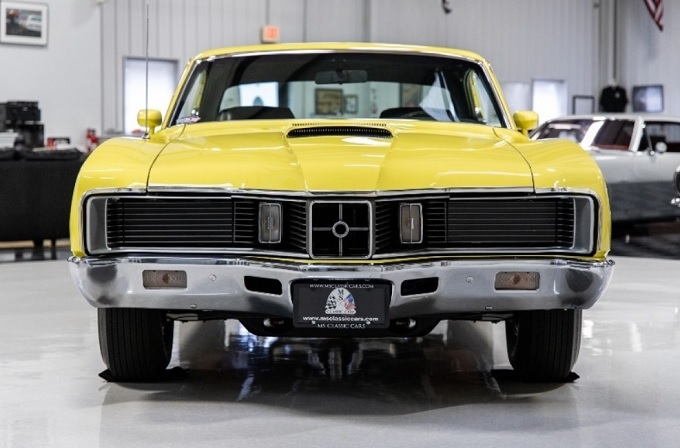
Buick brought the GS 455 Stage 1, Chevy unleashed the 454 CID (7.4 liters) LS6, and Ford renewed its pledge of Boss 429 allegiance. All these high-performance brawlers were not shy in their demeanor. They demanded attention with loud colors and earth-shaking burble.
There was, however, a particular segment of the market that didn’t want to be finger-pointed at while cruising the street, but also secretly lunged to shame everyone else at the stop lights. The Plymouth GTX was the elegant, self-contained, high-status symbol option.
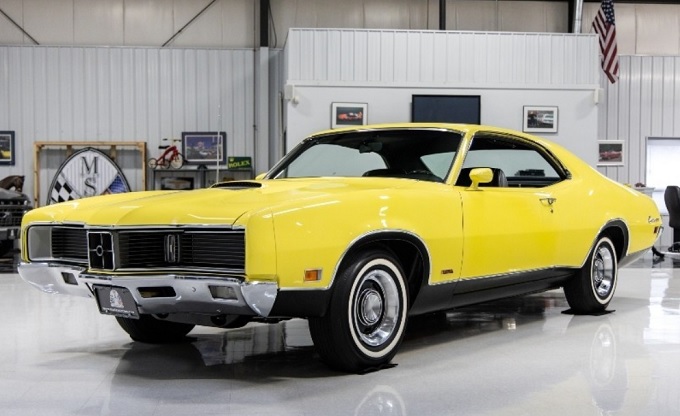
But what if it had to have the Blue Oval seal of approval on the big block? Well, in that case, there weren’t many options. Straight-out Fords were out from the start – too in-your-face. Lincoln couldn’t be bothered to build performance-spitting machines, so Mercury was left to honor the invitation.
While the Cougar was an appealing car, it was aimed at the young spectrum of the market. The mythologically-named division had a whirlwind of an ace up its sleeve. The Cyclone, which harmonized power and class under one hood – the GT – was equally inspiring for customers on “both sides of thirty.”
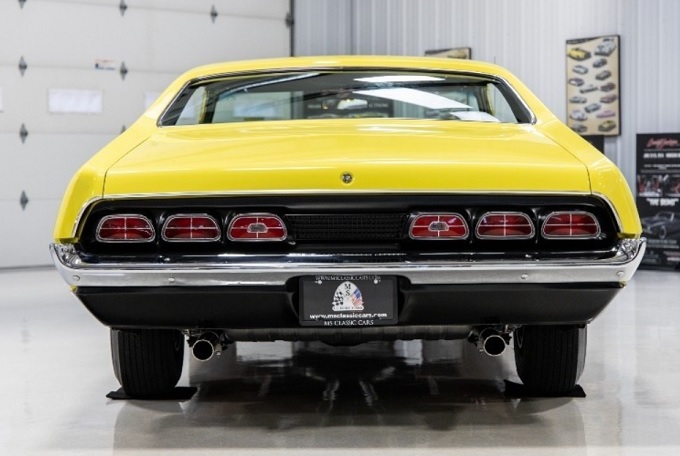
For 1970, Mercury built 10,170 Cyclone GT two-door hardtops, but only a handful – 394 – came with 429-4V Cobra Jet V8 engines. To narrow it down even more – a thrill-pill manual gearbox with four close ratios was fitted on just 146 vehicles.
Half them down and discard the ones without race pretensions. The remaining 73 came with the 429 cubes (7.0 liter) Super Cobra Jet engine and Drag Pak option. And it gets even better – only 16 wore the Competition Yellow jacket. Bottom line – just one had the rear window defogger: this one in our story.
The standard Cobra Jet was rated at 370 hp back in 1970. The Super Cobra Jet engine was infamously cited as a tamer of 375 horses and 450 lb-ft of torque. In metric, that’s 380 ps and 610 Nm, but don’t take Ford’s word for granted.
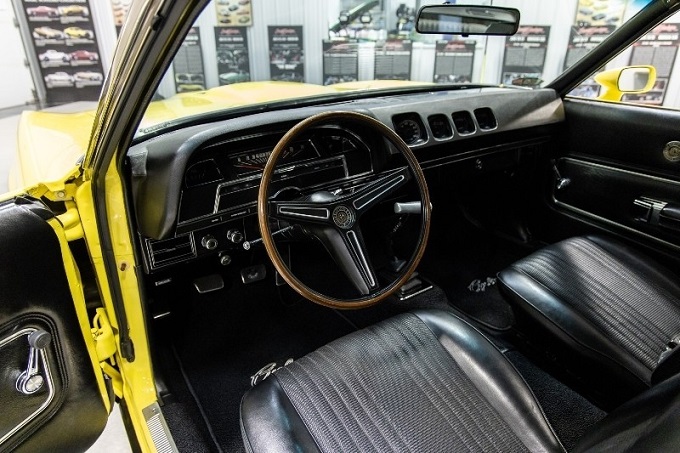
The “Super” prefix meant the following: four-bolt mains, pistons made of forged aluminum instead of cast, a 780 CFM Holley carburetor, a modified high-intake manifold, an oil cooler, and a solid-lifter camshaft.
All those for just five (5) hp extra and zero lb-ft surplus over a “regular” Cobra Jet? Who you’re tryin’ to kid, Ford? No wonder the Mercury Cyclone has that protruding Pinocchio nose – probably someone asked about performance ratings.
Everyone knows the truth – insurance bloodsuckers were on the prowl for high-end numbers, and hot-headed piston addicts were a preferred target. Dyno ratings from the era debunked the myth and revealed figures near 425 hp (430 ps).
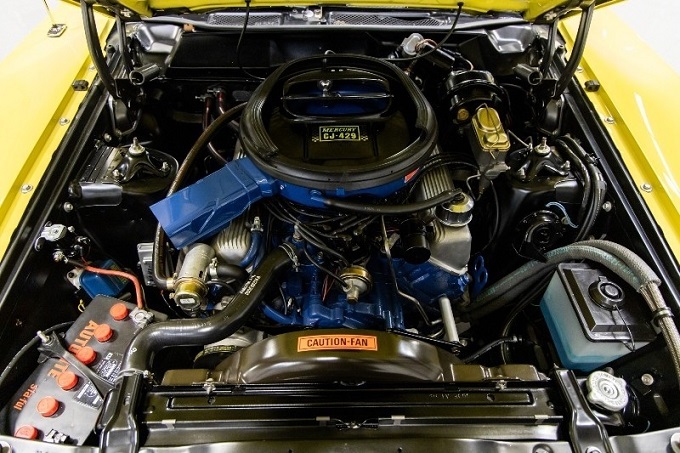
Allegedly, the Cyclone GT wasn’t quite the drag race dominator – not that it was explicitly aimed at that. Still, it would have left a good impression if it had attended such an event. Also, it was pretty fond of gasoline – then again, name a similarly-athletic Detroit make-and-model from the era that wasn’t.
That might have been fine and sweet in 1970, but this one-of-a-kind Mercury Cyclone GT got a 21st-century steroid shot. Although the car is near, as it makes no difference, original – albeit restored – its V8 got rebuilt. This might spur some bare-knuckle controversy among the brand’s fundamentalists: the original block was bored 0.8 inches (20 mm) over and stroked for a displacement of 533 CID (8.7 liters).
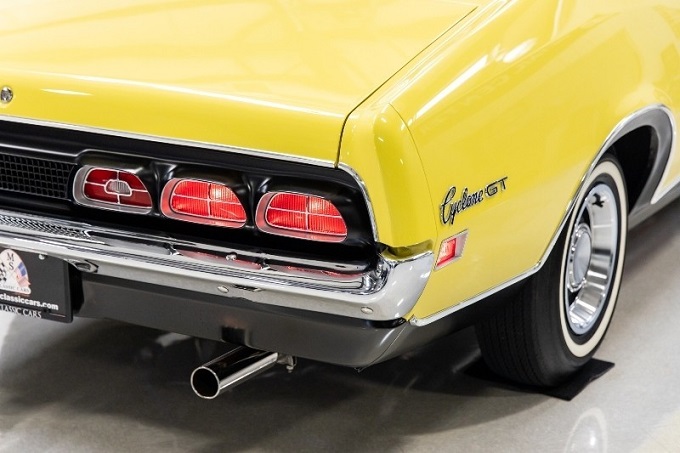
The outcome of this heart surgery is a dyno-confirmed (check the second video) power output of 527 horsepower and 599 lb-ft, or 535 ps and 812 Nm. To support the performance numbers, a 4340 forged steel crank, Comp Cam solid roller camshaft (with custom grind and Pro Magnum roller rockers), H Beam rods, and Auto Tec forged pistons were transplanted into the numbers-matching block.
Considering the original gearbox and 3.91 Track-Lok rear, taking it easy with the right foot would be best, even if the car has power disc brakes up front. It only carries just under 15,400 miles (less than 24,80 kilometers), so it would be a pity to put a dent in its sleek body. In this new athletic garment, there’s no saying what the performance end of its piston-powered character might be.
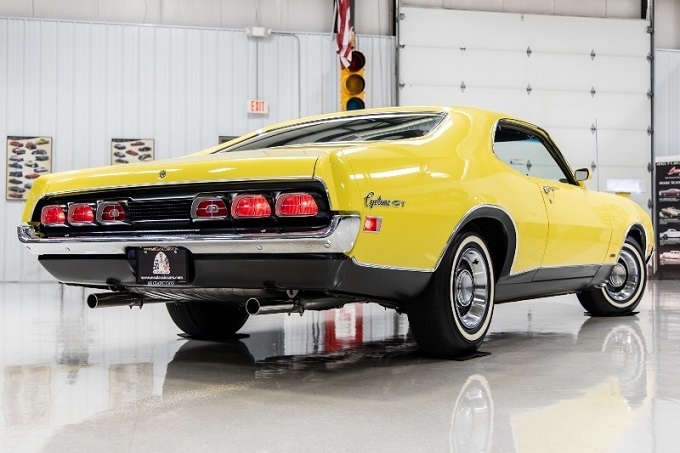
A Ford employee ordered this shiny yellow 1970 model-year Cyclone GT in September 1969. Little is known about the car’s history afterward, except it was in long-time ownership and care. The mileage is documented in the past and current title, so it’s fair to say it is original.
The car is for sale – and given its rarity, it’s expected to grab a nice score at the online auction where it’s listed. This 1970 Mercury Cyclone GT 429 SCJ car is a serious investment-grade disguised muscle car and should rise in value as it ages.
https://www.youtube.com/watch?v=dAFT7FiEIXw





